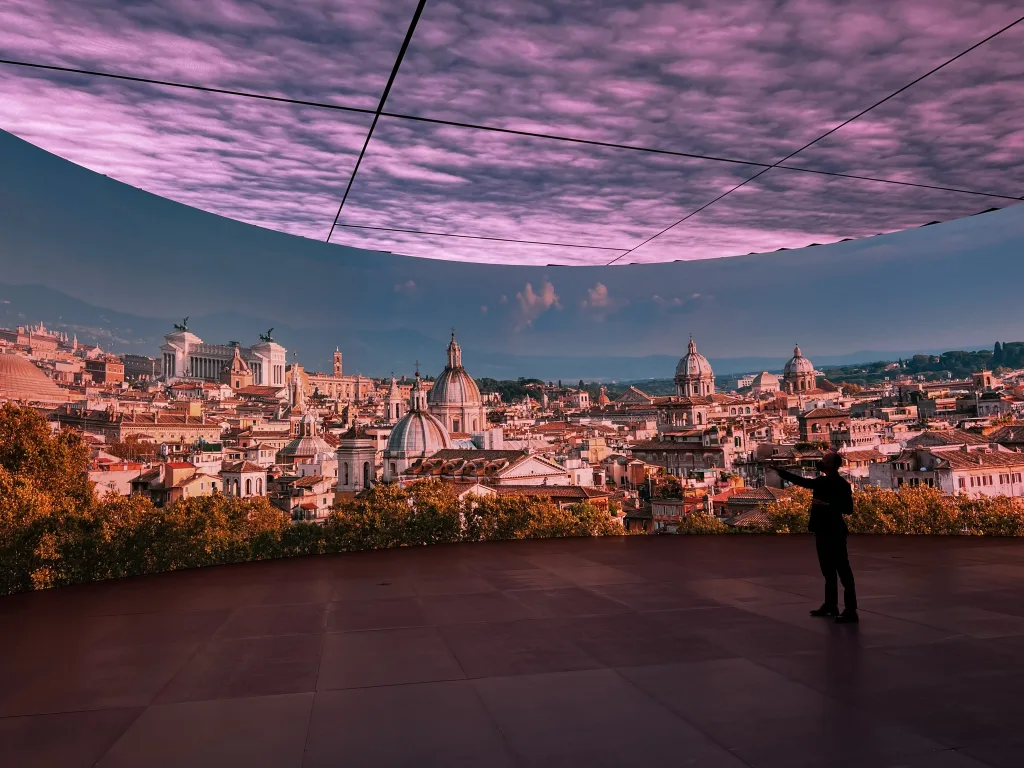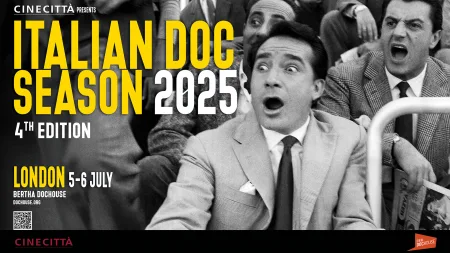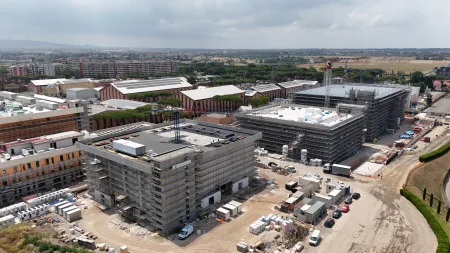22 February 2024
Radio France: “Cinecittà Studios in Full Revival”
"What attracts production teams here is a mix of technology and craftsmanship. Carpenters, painters, blacksmiths, and other on-site professionals greatly contribute to its fame," underlines the long coverage broadcast on public radio beyond the Alps.

After the recent front pages of the New York Times and El Pais, articles in the Guardian, the Sunday Times, Vanguardia, and finally, last December, the front page of Le Monde, Radio France dedicates a long coverage to the Via Tuscolana Studios.
“Cinecittà Studios in Full Revival” is the title of Bruno Duvic’s reportage, followed by interviews with CEO Nicola Maccanico, the Studios’ sets and carpentry department directors, Simona Balducci and Paolo Perugini, and filmmaker Saverio Costanzo.
“Dwindling since the 1980s, today the Studios are churning out productions at full capacity for both cinema and TV, thanks to the streaming platforms’ boom,” says the broadcaster’s Italy correspondent, who underlines how “Hollywood stars are back in Cinecittà, in front or behind the camera,” referring to Anthony Hopkins, Angelina Jolie or Adam Driver…
For Those About to Die, Roland Emmerich’s series starring Anthony Hopkins, “shooting took place for ten months. The director was incredibly efficient,” says Simona Balducci, head of set designs at the Studios. “We had just built a set and already needed another for the following day. After the pandemic, productions realized that it was more convenient to film in a single place,” she explains, “So the benefits of shooting in Studios have been rediscovered.”
“Cinecittà has experienced a double-digit growth in 2023 and a stage occupancy rate close to 80%,” explains CEO Maccanico, who also mentions the agreement with major producer Freemantle for the use of six stages and the European funds to build five new ones and renovate four others. “A new golden age, because our country offers beneficial taxation, a tax credit system that makes us competitive on the main European and world markets, and then, above all, the explosion of the audiovisual market.”
“The old image of Cinecittà is fading – witness Stage 18, a leading soundstage for virtual reality filming” (in the photo above), writes Duvic. “But what attracts production teams here is its mix of technology and craftsmanship. Carpenters, painters, blacksmiths, and other on-site professionals greatly add to its reputation.”
“What makes the difference here are people like Paolo Perugini, who manages the Studio’s carpentry: their know-how is exceptional,” says the Radio France journalist. “Cinecittà’s artisans have made an art of transforming the fake into real,” explains Perugini. “Since 1992, I cannot count the films I took part in. I am in contact with the entertainment business’s greatest architects and set designers. Few people know how to do my job.”
“The film Finally Dawn, in theaters starting Wednesday 14 February, was mainly shot in Roman soundstages and pays homage to their history,” adds Duvic, who notes how “for Roman filmmaker Saverio Costanzo, extras are fundamental.”
“We are Cinecittà,” says Costanzo. “Rome’s exceptional sunlight shines in Cinecittà in a unique way. When I say ‘We are Cinecittà,’ I mean that our faces and bodies make up Italian cinema. These overlying features create a mosaic that provides the image of our country.”
Bruno Duvic’s full report is available on the Radio France website, at this link:



